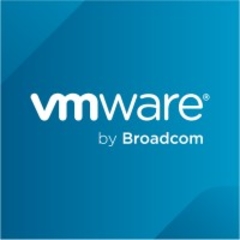The performance is the most valuable.

The performance is the most valuable.
There is only a fraction of performance tuning that you need to be careful about, compared to Oracle DB.
Session management for client tools needs work.
I've used it for nine months.
Nothing to complain about.
Technical Support:Nothing to complain about.
Previously, there was Oracle database, and the EMC Greenplum database was used for better performance from larger data volumes because it uses massively parallel processing. This increased the performances multiple times while reducing time needed for optimization of database queries.
We had a team from EMC, who had a very high level of expertise.
It's a very good product for reducing the time and man power needed for database optimization for datawarehousing purposes.
External tables to load the data from flat files.
It helped us in loading millions of data in quick time & improved query response.
More stability in terms of query result.
Five years - DCA V2.0 EMC & Greenplum Database
No.
Not usually, but sometimes we do.
No issues encountered.
Excellent.
Technical Support:Excellent.
We applied MPP Appliance for the first time earlier we were running on SMP’s.
It was straightforward.
Vendor- they had good expertise.
Good.
We also looked at Teradata.
Very good and cost effective with very good customer support.
We use the scrum methodology to manage our engineering work. And while this does give us the flexibility to quickly respond to changing business needs, it also means that our databases’ schemas are not set in stone. To accomodate frequent changes to the way we structure our data, we’ve adapted Ruby on Rails database migrations for use beyond our Rails apps.
Our first challenge was to find and extract the migration’s functionality from Rails so that we could use it without needing to bring in the other features of Rails we didn’t need. Thankfully, this turned out to be relatively simple because almost all of the functionality can already be accessed by Rake tasks, so it was just a matter of building a Rake file that contains the tasks we wanted from Rails. The only thing we had to add to get started was a Rake task for creating new migrations, since Rails creates them either automatically when creating new model objects or through the `rails generate migration` command.
We quickly ran into problems, though, because we use Greenplum, a DBMS built on Postgres that adds support for features that help accomodate big data. Unlike standard Postgres, Greenplum adds features, such as table partitions, not found in most DBMSes, but Rails is designed to be DBMS agnostic so you can easily switch between, say, Postgres and MySQL and SQLite without any more trouble than changing a single configuration file. So we decided to cut around Rails’s database abstractions and instead directly write SQL in our migrations and dump SQL structure files rather than Rails schema files.
Only this didn’t work because, to complicate matters further, although we use Greenplum in production and staging environments, for local testing and development we use Postgres because Greenplum has minimum requirements that ended up consuming too much of our workstations’ resources. So we ultimately ended up developing a hybrid solution that allows us to support Greenplum and Postgres in the same migrations.
The two main aspects of the solution are selective application of options when making changes to the database and keeping two separate dumps of the database, one for Greenplum with Greemplum-only syntax and one for Postgres with Greenplum-only syntax removed. For example, we rewrote the Rails `create_table` migration function to add support for Greenplum options like partitions, data distribution, and append-only tables, but then have the function ignore those options when running the migrations against our development Postgres databases. This allows us to use a single set of migrations on all of our databases, drastically simplifying what could have otherwise been a gnarly challenge.
By no means is our solution complete or perfect. It only supports those features of Greenplum that we use, and new features only get added in as we need them, plus there is some risk associated with keeping two separate schema dumps and the potential for them to get out-of-sync. Still, compared to maintaining a database with frequently changing schemas without the aid migrations, it’s lightyears better.
Our primary use case is as a messaging broker between enterprise applications. It makes for reliable and secure communication.
The most valuable feature for me is that it is open source. The licensing costs are really low and they are transparent. You know how much you are going to pay if you want the commercial version. If you want the open-source version, you do not have to pay anything and that is just as reliable as the commercial one.
I would like to see the performance of the administration portal improved and additional messaging protocols.
I have been working with VMware RabbitMQ for the past eight years.
It is highly stable, reliable, and persistent.
VMware RabbitMQ is definitely scalable.
Technical support is excellent.
Positive
The initial setup was very easy and takes about five minutes to install.
If you want to pay for the licensing it costs eight hundred dollars per CPU core annually with the support.
I would give the following advice prepare a demo, with the vendor and check if it really applies to their needs. I would rate VMware RabbitMQ a nine out of ten.
